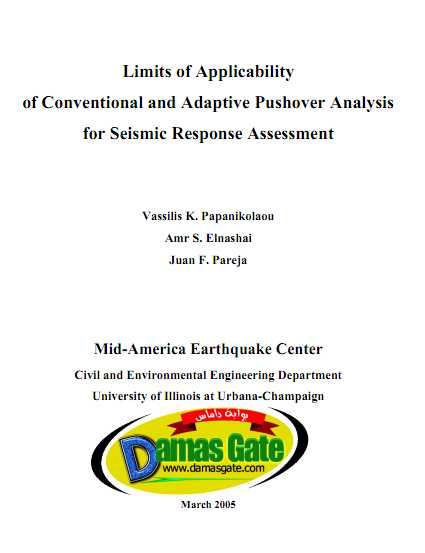Limits of Applicability of Conventional and Adaptive Pushover Analysis for Seismic Response Assessment

1. INTRODUCTION
1.1 Background Conventionally, seismic assessment and design has relied on linear or equivalent linear (with reduced stiffness) analysis of structural systems. In this approach, simple models are used for various components of the structure, which is subjected to seismic forces evaluated from elastic or design spectra, and reduced by force reduction (or behavior) factors. The ensuing displacements are amplified to account for the reduction of applied forces. This procedure, though simple and easy to apply in the design office environment, suffers from the following shortcomings :
The force reduction factors recommended in codes of practice are approximate and do not necessarily represent the specific structure under consideration.
When critical zones of a structure enter into the inelastic range, the force and deformation distribution change significantly. This change is not represented by a global reduction of forces.
The mechanism that will most likely perpetuate collapse is unlikely to be that represented by the elastic action and deformation distribution.
The global and particularly the local distribution of deformations in the inelastic range may bare no resemblance to those in the elastic range. The same applies to the values of deformations, not just the distribution.
Download
http://s18.alxa.net/s18/srvs2/02/001...Assessment.rar